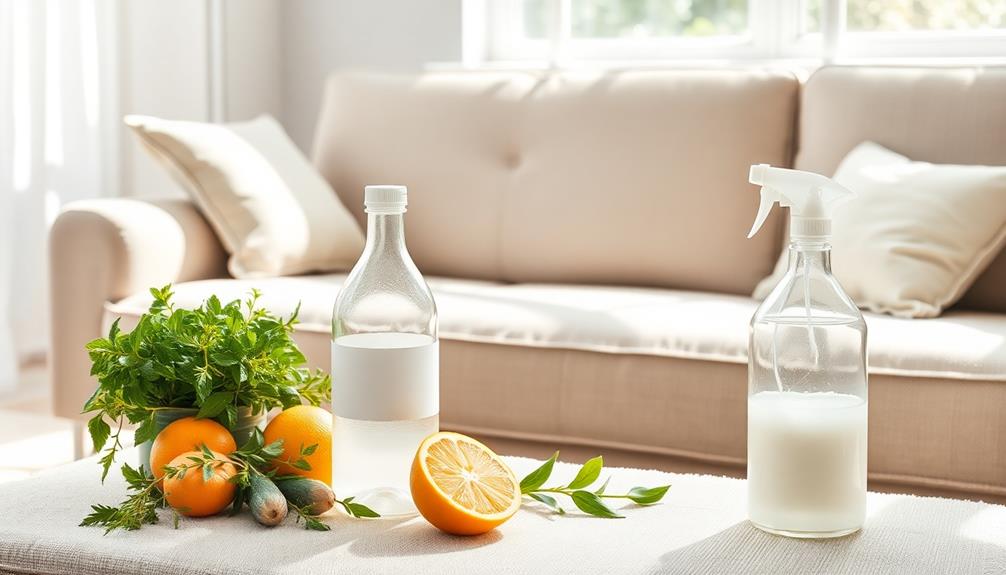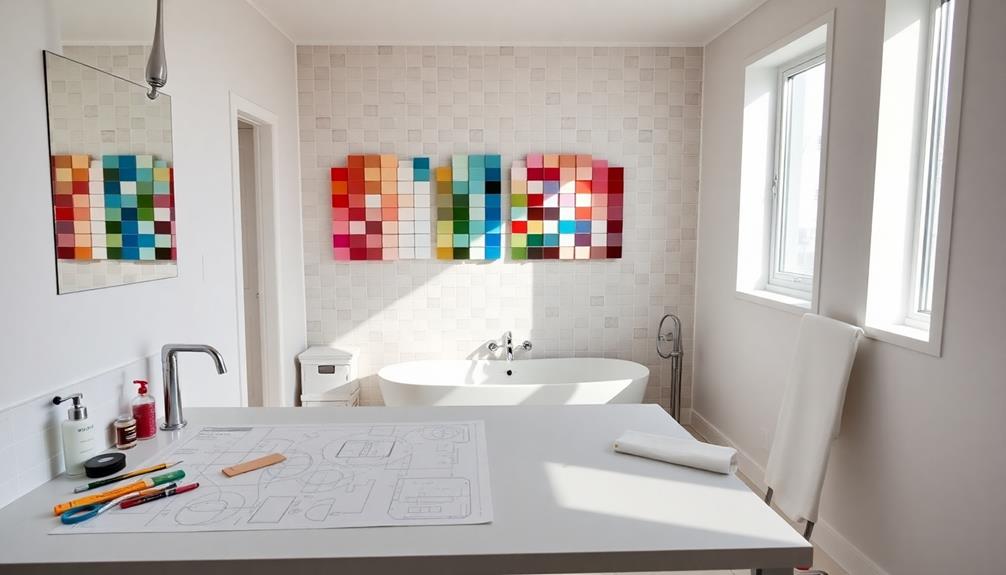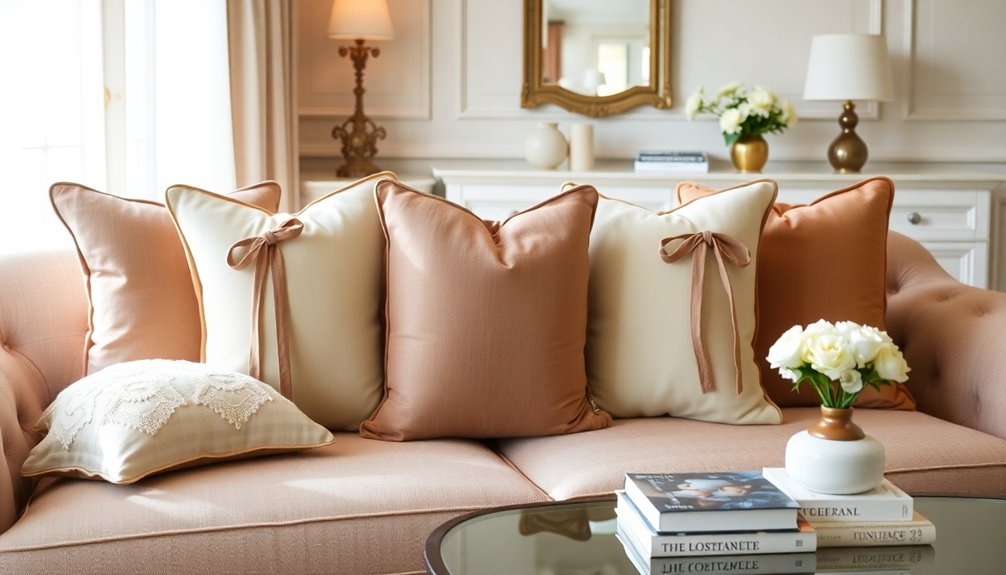To properly clean your fabric sofa using vinegar, mix equal parts white vinegar and warm water in a spray bottle. You can also add a tablespoon of liquid soap for added cleaning power if desired. Begin by vacuuming the sofa to remove any dirt. Lightly spray the solution onto stained areas and allow it to sit for a few minutes. Gently scrub the stains with a soft cloth using circular motions. Allow the sofa to air dry completely. To eliminate any lingering odors, sprinkle baking soda on the cleaned areas and then vacuum it up. Additional tips on effective cleaning techniques and enhancing the appearance of your sofa can be found here. For a more thorough cleaning, consider washing any cushion covers if the fabric care label permits. Regular maintenance, such as flipping and rotating cushions, can help prolong the life of your sofa. Make sure that sofa cushions are completely dry before placing them back to prevent mold or mildew buildup.
Key Takeaways
- Mix equal parts white vinegar and warm water in a spray bottle for an effective cleaning solution.
- Vacuum the sofa thoroughly before applying the vinegar solution to remove dirt and debris.
- Lightly spray the vinegar solution on stained areas and let it sit for a few minutes.
- Gently scrub the stains in circular motions using a soft cloth until they lift.
- Allow the sofa to air dry completely, then sprinkle baking soda to absorb any residual odors.
Benefits of Using Vinegar

When it comes to cleaning your fabric sofa, using vinegar offers numerous benefits that make it a top choice. First off, vinegar is a natural disinfectant, boasting antibacterial properties that effectively sanitize your upholstery.
You'll appreciate the peace of mind knowing it's a safe alternative to harsh chemical cleaners, especially in homes with children and pets. Additionally, vinegar is an excellent way to maintain the freshness of your home, much like how butter enhances flavor in cooking.
Vinegar's eco-friendly and biodegradable nature means you're making a sustainable choice for your cleaning routine. It doesn't just stop at sanitizing; vinegar excels at eliminating stubborn odors and stains, helping your sofa maintain that fresh, inviting look.
Another great aspect is its cost-effectiveness. Compared to commercial upholstery cleaners, vinegar provides a wallet-friendly solution that works just as well, if not better.
You'll save money on regular maintenance without sacrificing quality.
Preparing Your Cleaning Solution

To prepare your cleaning solution for a fabric sofa, start by mixing equal parts white vinegar and warm water in a spray bottle. This balanced formula is effective for cleaning and deodorizing your upholstery.
For enhanced cleaning power, add a tablespoon of natural liquid soap to the mixture. This helps break down grease and grime that may have accumulated on your sofa. Additionally, you might consider incorporating a few drops of essential oils for a revitalizing scent, as certain oils can also offer antimicrobial benefits.
If you want to make the cleaning process more enjoyable, consider adding a few drops of essential oils. This will provide a pleasant fragrance, making your clean home smell fresh and inviting.
Before applying the solution to the entire sofa, always test it on an inconspicuous area. This step is essential to confirm there are no adverse reactions or discoloration on the fabric.
Once you've prepared the cleaning solution, remember to store any unused mixture in a cool, dark place to maintain its effectiveness for future use.
Cleaning Process for Fabric Sofas

Now that you've prepared your cleaning solution, it's time to tackle the cleaning process for your fabric sofa. Start by vacuuming your sofa thoroughly to remove loose dirt and debris. This step is essential, as it prevents dirt from mixing with your cleaning solution and making stains worse. For even better results, consider looking into professional cleaning services that specialize in upholstery care.
Next, take your vinegar and water cleaning solution, and lightly spray it onto the fabric, focusing on any stained areas. Allow the solution to sit for a few minutes; this will help it penetrate the fabric and break down the stains.
After that, grab a soft cloth and gently scrub the stained areas in circular motions. Be careful not to soak the fabric, as excess water can cause damage.
Once you've cleaned the sofa, let it air dry completely. To keep your sofa smelling fresh, consider sprinkling some baking soda on the cleaned areas after they dry. This will help absorb any residual odors.
After a few hours, vacuum the baking soda off, and you'll have a clean, refreshed fabric sofa ready for use!
Stain Removal Techniques

Effective stain removal techniques can make a significant difference in maintaining the appearance of your fabric sofa. To tackle stains effectively, act quickly to prevent them from setting in.
For tough stains, create a vinegar solution by mixing washing-up liquid, white vinegar, baking soda, and warm water. This method can be as satisfying as brewing a perfect cup of coffee, where understanding the mechanics can enhance the experience various brewing methods.
Apply this mixture directly to the stain and let it sit for about 10 minutes. Afterward, use a soft cloth to gently wipe it away.
When using vinegar, always check the furniture code to verify it's safe for your fabric. Not all materials respond well to vinegar, especially water-sensitive ones.
If a stain persists, you can gently scrub the area with a soft cloth or even a toothbrush in circular motions to lift the stain without damaging the upholstery.
Additionally, consider using water in a spray bottle to lightly mist the stained area before applying your cleaning method.
Always test any cleaning solution on an inconspicuous area first to verify it doesn't cause discoloration or damage.
Tips for Effective Cleaning

Maintaining a fabric sofa goes beyond just tackling stains; regular cleaning is key to enhancing its longevity and appearance. Start by checking the furniture care tag for cleaning codes to verify that white vinegar is safe for your specific fabric upholstery.
Once confirmed, prepare a cleaning solution by mixing equal parts white vinegar and water in a spray bottle. This effective cleaning solution not only helps remove stains but also neutralizes odors, similar to how home remedies can alleviate other household issues.
When you spot a stain, lightly mist the vinegar solution onto the affected area. Use a soft cloth to scrub gently, as this prevents damage to the fabric. After cleaning, allow the area to air dry completely to avoid mildew. To speed up the drying process, you can use a vacuum.
For persistent odors, sprinkle baking soda on the cleaned area once it's dry. Let it sit for at least an hour, then vacuum it off. This method helps rejuvenate your sofa and enhances freshness.
Frequently Asked Questions
Can I Clean My Fabric Couch With Vinegar?
Yes, you can clean your fabric couch with vinegar. It's a natural disinfectant that effectively removes stains. Just mix it with water, test a small area first, and follow proper cleaning techniques for best results.
What Is Best for Cleaning a Fabric Sofa?
The best way to clean a fabric sofa involves regular vacuuming, using a mild detergent or fabric cleaner, and spot-treating stains. Always check the care label to ascertain you're using safe cleaning methods for your sofa.
How to Deep Clean a Fabric Couch?
Imagine your fabric couch as a canvas, waiting for a fresh masterpiece. To deep clean, vacuum thoroughly, mist with your chosen solution, scrub gently, and let it breathe, ensuring it shines and feels inviting again.
What Is the Best Homemade Upholstery Cleaner?
For the best homemade upholstery cleaner, mix equal parts white vinegar and water in a spray bottle. Add a few drops of natural soap for extra cleaning power, and always test it on a hidden area first.
Conclusion
Incorporating vinegar into your fabric sofa cleaning routine not only saves you money but also helps you avoid harsh chemicals. With the right preparation and techniques, you can revive your sofa's appearance and extend its lifespan. So, why settle for a stained or dingy sofa when a simple vinegar solution can bring it back to life? Embrace this natural cleaning method, and enjoy a fresher, cleaner living space that you can truly be proud of.









